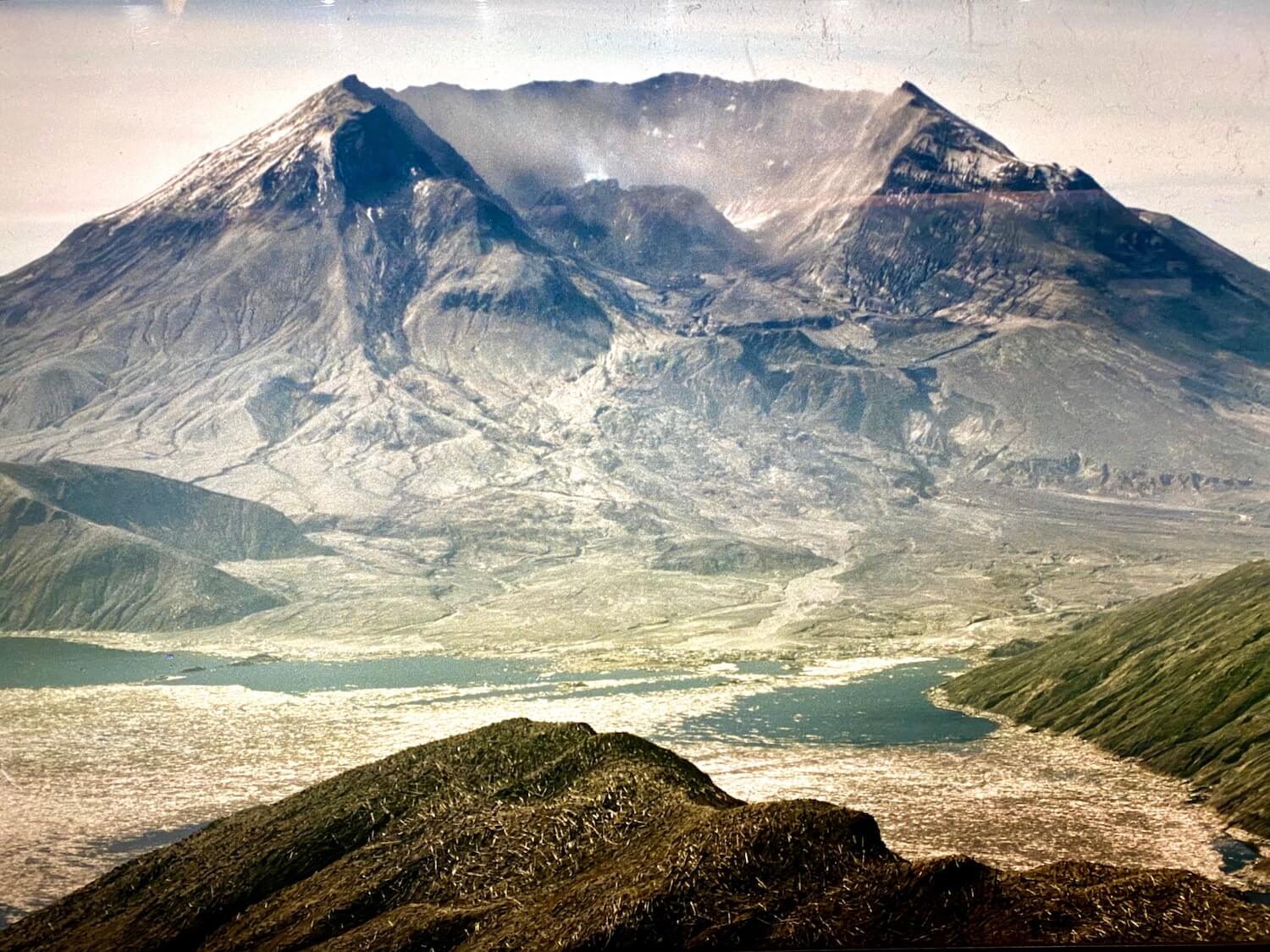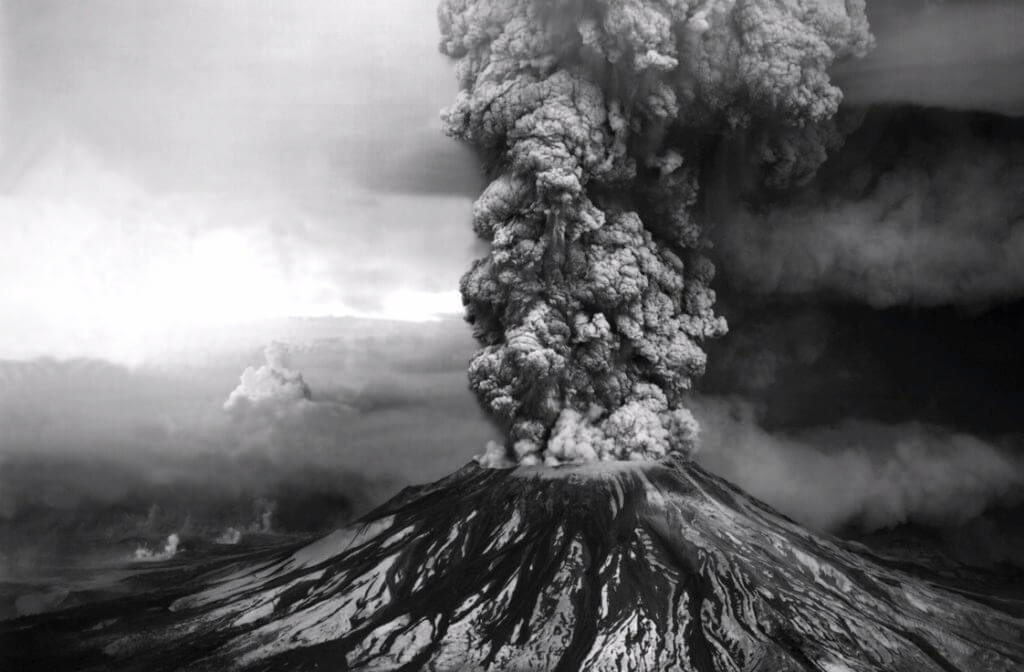
40 year anniversary of the Mount St. Helens volcanic blast
When I was seven I remember taking an end-of-the-year Sunday school field trip. My Aunt Barbara was our teacher, and cousin Monica and I played in the back seat of the silver Toyota Corolla as she drove toward a waterway in the dike area of Scappoose. All at once, she stopped the car in the middle of the road and turned up the am radio station. The radio was scratchy — people talking in serious tones of worry.
Aunt Barbara turned the car around and we didn’t understand. I wanted to have the picnic as planned, mostly because there would be German Chocolate cake at the end for dessert. The energy seemed one of panic, but there was no explanation to us — I was dropped off at home to find my mom in a frenzy.
It was May 18, 1980 and only 40 miles away from us the crater of Mount St. Helens had just blasted a 13 mile high cauliflower cloud of ash and rock with the force of over 1500 atomic bombs.
As a child I didn’t quite understand that history was in the making — radio and TV were wild with sensational stories. Thousands of acres of trees were thrown down like matchsticks and the insta-melted glaciers created a wall of water, mud and debris that raced down the Toutle River, tearing out anything in the way. The sediment was the consistency of wet concrete and eventually ended up filling the Columbia River to the point that shipping had to cease until the river could be re-dredged. Thousands of trees making it to the Pacific Ocean were returned to the beaches along the coastline as massive mementos of driftwood. Even today, there are huge piles of ash seen in places along busy Interstate 5 around the Toutle River.
The initial blast hit an easterly current, so most of the debris blew toward the Yakima Valley and beyond, entombing the farming communities with thick soot-like gray ash. This was an instant hardship for the farmers of Washington. A few days later the winds shifted south, directly towards Scappoose and we were graced with inches of the gray dust. It was a fine talcum powder feel until rain water was added — then a gooey gelatinous consistency lathered over everything.
Cleaning the thick molasses substance from our deck and lawn was forever burned into my memory and it seemed to take forever. We saved some of the ash in mason jars for posterity. Farming was very difficult that summer, as all the fields of crops were encased in ash — making the process of harvesting near to impossible. The machinery would grind to a stop from the friction of the gritty substance.
We witnessed a few more smaller eruptions that summer with light fallout of ash and once the dust settled, by the fall of 1980, Mount St. Helens had blown about 1,300 vertical feet and a whole side of mountain into the atmosphere and ash was traced all over the world. 57 souls perished in the catastrophic series of events and almost 200 people were rescued by helicopter crews.
The scene for many years after the famous eruption resembled photos of the moon. No apparent life for miles — just volcanic ash everywhere. The nearby mountain lakes were filled with a medley of debris including a patchwork of trees, mud and all kinds of other organic matter. It seemed like life would never return.
In only a matter of years, the lakes cleared up, aided by millions of small bacteria. Trees were planted in some areas while other parts of the topography welcomed volunteer seeds of quick-growing trees like alders. Pocket gophers mixed the ash and soil, prairie lupine sprouted from roots in the ground, and sitka willow rooted along streams — all early heroes in a new, emerging world.
Aside from shoveling her ash, my relationship with Mt. St. Helens developed later in the 1990’s. I’ve enjoyed so many varied experiences — hiking the dusty blast zone ridge trail, exploring the Ape Caves, camping near Cougar, riding in a helicopter over the ridges of blasted trees, and climbing to the summit of the crater rim in the June snow. I’ve grown to love the mountain and surrounding areas in this newly emerging recreation wonderland.
People interviewed about the statuesque mountain before the eruption consistently shared that she had a powerful spirit. For me, every visit feels like a pilgrimage and even today, in my home, I still feel a sense of reverence when my thoughts turn to her. There is an energy — a personality — existing just under the surface.
I recently returned to Mt. St. Helens and felt a rush of joy gazing at the snow-covered crater — a vibrant carpet of plant life flowing in every direction as we rounded the many curves along the Spirit Lake Highway. Truly inspiring that 40 years later the landscape is a lush color of green, everywhere.
To me, the sleeping volcano gifts us an amazing metaphor for our current times — even after epic devastation completely alters the landscape, life returns. It might be slightly different than before, but resilience is all around us — in nature and in humanity.
May resilience live on!
Matthew
PS. I’ve followed Mount St. Helens history for many years and have a few favorite photo essays and articles that bring to life the events around the May 18, 1980 volcanic eruption.
My favorite collection of photos are displayed in The Atlantic.
Harry R. Truman owned and operated the Mt. St. Helens Lodge, at Spirit Lake, for many years. At 83 years of age, he refused to leave the mountain when everyone else evacuated May 17, 1980. This is a romantic tribute to him.
The Seattle Times produced a great piece about the couple owning the other lodge on Mt. St. Helens, Spirit Lake Lodge. A very heartfelt, human read.

